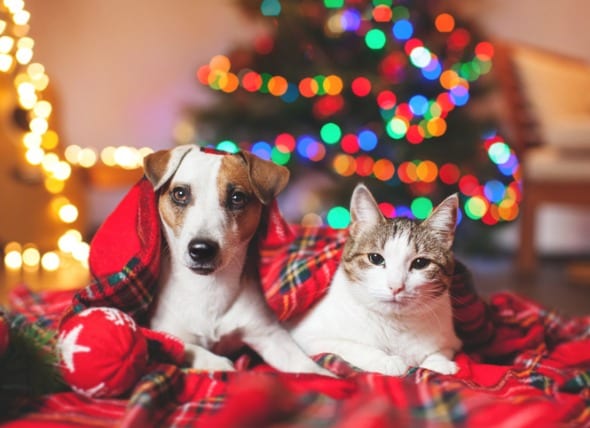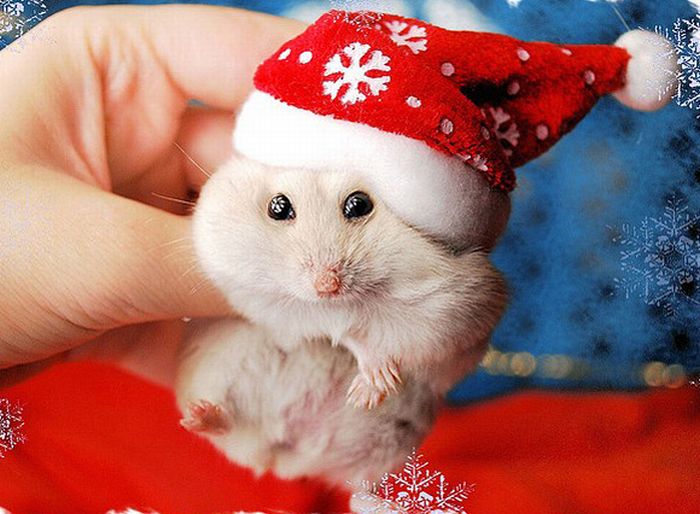10 Pet Safety Tips for the Holidays
"...1. Place your Christmas tree in a corner...Since cats and Christmas trees are not always the best combination, it may take some ingenuity on your part to keep both parties safe during the holiday season.

2. Tinsel can add a nice sparkling touch to the tree, but make sure you hang it up out of your pet's reach, or... simply don’t use it.

3. Do not put lights on the tree's lower branches. Not only can your pet get tangled up in the lights, but they can also cause burns on both cats & dogs... Additionally, your dog or cat may inadvertently get shocked by biting through the wire.

4. Ornaments need to be kept out of reach... In addition to being a choking & intestinal blockage hazard, shards from broken ornaments may injure paws, mouths or other parts of your pet's body.

5. For those buying live Christmas trees... keep the area around the tree free & clear of pine needles... the needles cause stomach upset & can irritate or puncture your pet's intestines if ingested.

6....holly & mistletoe are poisonous to dogs & cats... they should be kept in an area your pet cannot reach. Poinsettias are also not a great idea, as they can cause nausea & vomiting if ingested.

7. Edible tree decorations...are pet safety time bombs waiting to happen.

8. Burning candles should be placed on high shelves or mantels, out of your pet's way...Homes with fireplaces should use screens to avoid accidental burns.

9. ... exposed indoor or outdoor wires should be taped to the wall or the sides of the house. Any wires extending away from the wall should be wrapped in hard protective plastic to make them less interesting to your cat.
10. ...Wrapping paper, string, ribbon, plastic pieces or cloth could all cause intestinal blockages...Be cautious about leaving wrapped gifts with ribbon & bows under the tree where your pets can get to them."

petmd.com
Christmas Critter Pics




RIP Sweet One We miss you so much.













